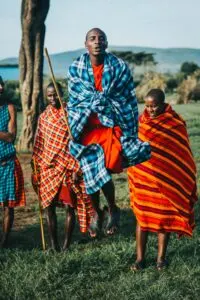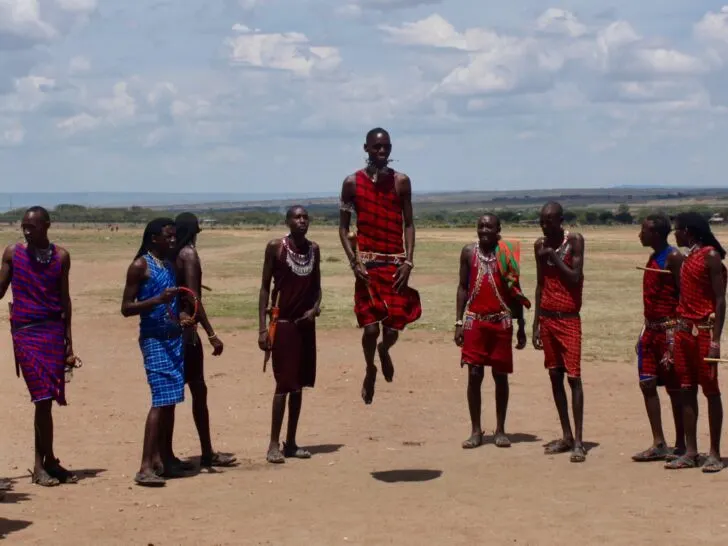Some of the links in this post are affiliate links. This means if you click on the link and purchase the item, we will receive an affiliate commission from the vendor at no extra cost to you. These business relationships allow us to keep bringing you great EatMoveHack content. All opinions remain our own.
Welcome to a captivating journey in our Global Wellness Series, focusing on Traditional African Healing Practices. These practices, deeply rooted in the continent’s culture and history, represent a holistic approach to health and wellness. We will explore the diverse and rich traditions of African healing, encompassing everything from the use of potent indigenous herbs and the therapeutic power of healing dances, to the invaluable role of community-based approaches. These practices offer a window into the soul of African wellness.
Indigenous Herbs: Pillars of Traditional African Healing Practices
At the core of these practices are indigenous herbs, treasures of the African flora. These natural remedies, steeped in ancestral knowledge, are central to the health and wellness ethos of many African communities. For instance, the Rooibos plant, a cornerstone in South African healing, is revered for its remarkable antioxidant properties (South African Journal of Botany). Similarly, Umckaloabo, known for its effectiveness in treating respiratory conditions, exemplifies the resourcefulness of Traditional African Healing Practices in using nature’s bounty for health (Journal of Ethnopharmacology).
These herbs are more than mere ingredients; they are the essence of, acting as natural pharmacists for a plethora of health issues. They demonstrate the African philosophy of living in harmony with nature, where healing is as much about prevention as it is about cure.
Healing Dances: A Rhythmic Component of Traditional African Healing Practices
Dance is a pivotal element in Traditional African Healing Practices, serving both as a form of expression and a therapeutic tool. These healing dances, embodying the vibrancy and rhythm of African culture, are vital for communal health and emotional well-being. The Maasai Adumu dance, known for its iconic jumping movements, is a powerful physical and communal activity that promotes strength, endurance, and unity — all crucial aspects of Traditional African Healing Practices (Cultural Survival).
embodying the vibrancy and rhythm of African culture, are vital for communal health and emotional well-being. The Maasai Adumu dance, known for its iconic jumping movements, is a powerful physical and communal activity that promotes strength, endurance, and unity — all crucial aspects of Traditional African Healing Practices (Cultural Survival).
Similarly, the Zulu Indlamu dance, with its intense and spirited movements, is more than a cultural showcase. It’s a physical embodiment of strength and resilience, integral to Traditional African Healing Practices. These dances are not just performances; they are communal experiences that weave the fabric of African societies, promoting physical health and social cohesion.
Community-Based Approaches: The Core of Traditional African Healing Practices
Perhaps the most distinctive aspect of these practices is their community-centric nature. Healing in African cultures is often seen as a collective journey, involving the support and wisdom of the entire community. These practices underscore the African belief in Ubuntu, which emphasizes the interconnectedness of all beings. Community health practices might include group healing ceremonies, community discussions, and the sharing of wisdom from elders (World Health Organization).
This collective approach to wellness not only provides emotional support and strength but also ensures the preservation and transmission of these traditional practices. It fosters a sense of belonging, identity, and continuity, essential components of mental and emotional health.
In Conclusion
Traditional African Healing Practices, like a deeply rooted tree, offer a rich tapestry of health and wellness wisdom. These practices, encompassing the healing power of nature through herbs, the unifying force of dance, and the strength of community, reflect a holistic view of health. They demonstrate a profound understanding of the interconnectedness of the physical, emotional, and communal aspects of well-being.
“In the rich tapestry of Traditional African Healing Practices, we find a harmonious blend of nature, rhythm, and community, each strand weaving a story of wellness and unity.”
Discover more about global wellness traditions and how they can enrich your life by visiting our Global Wellness Series at eatmovehack.com.
Note: The health advice in this article aligns with accepted guidelines but should not replace professional medical advice.

